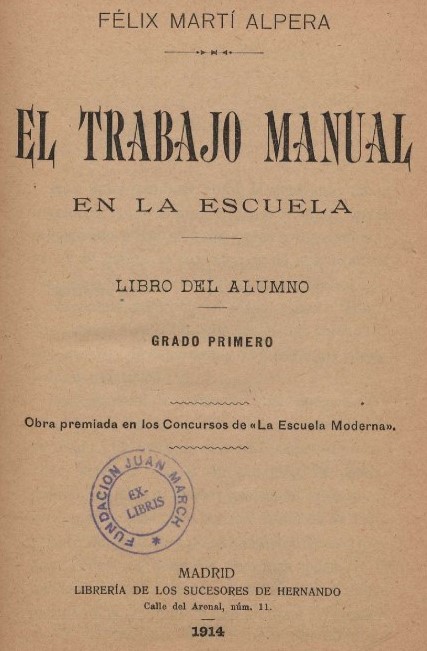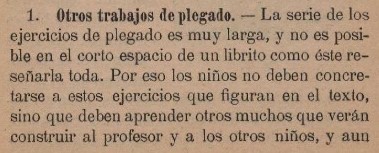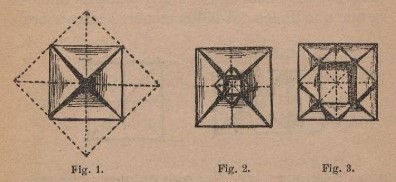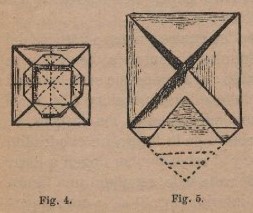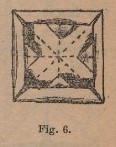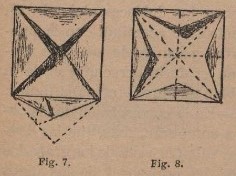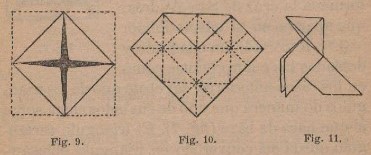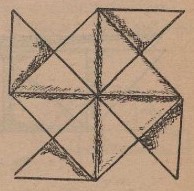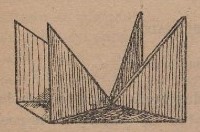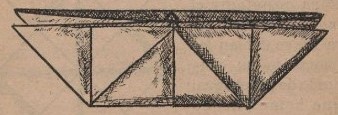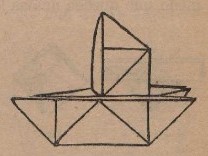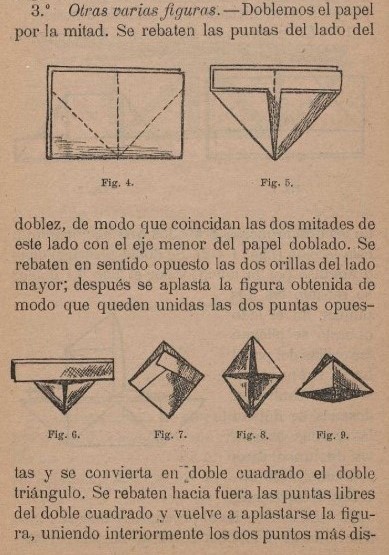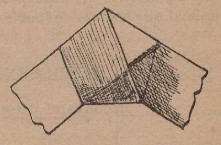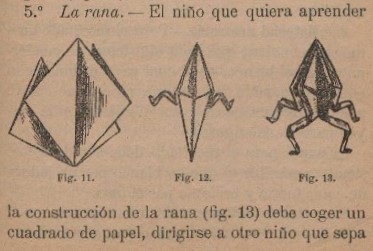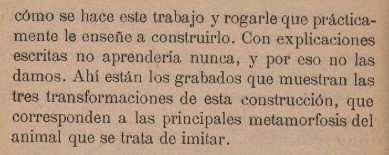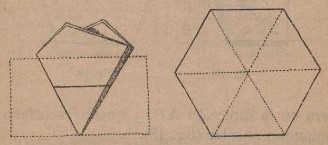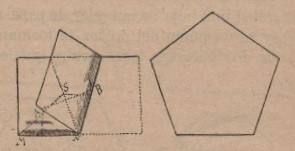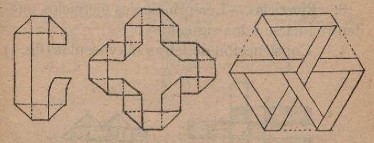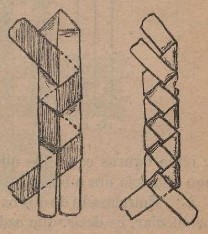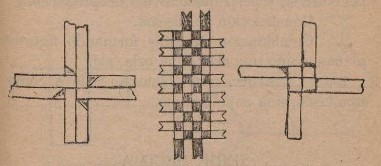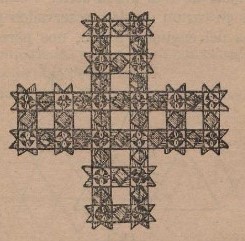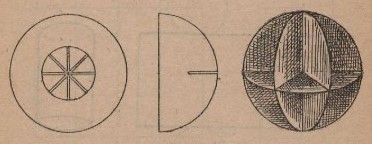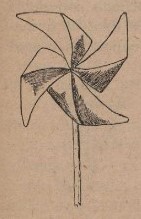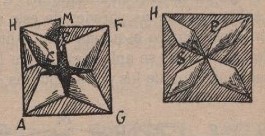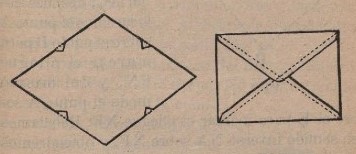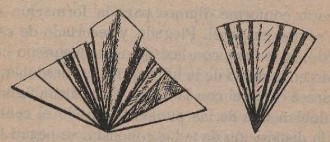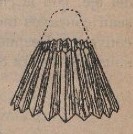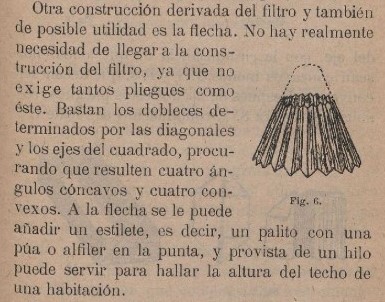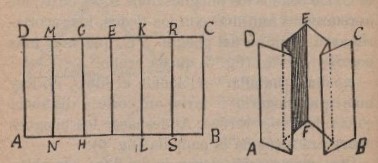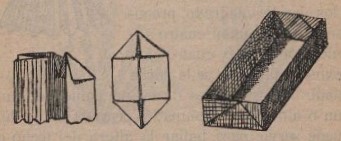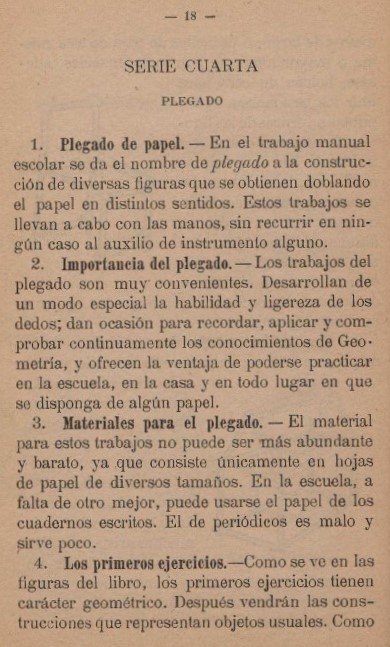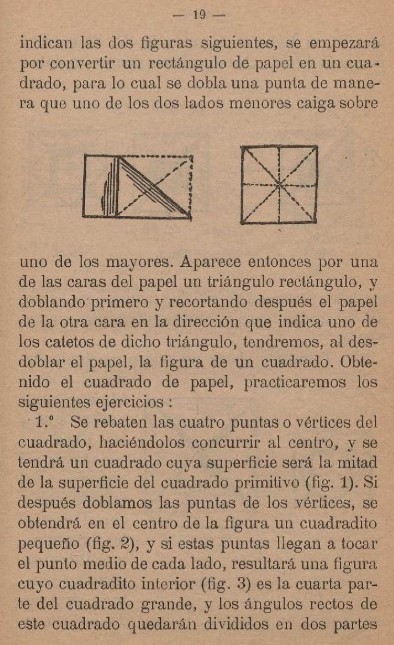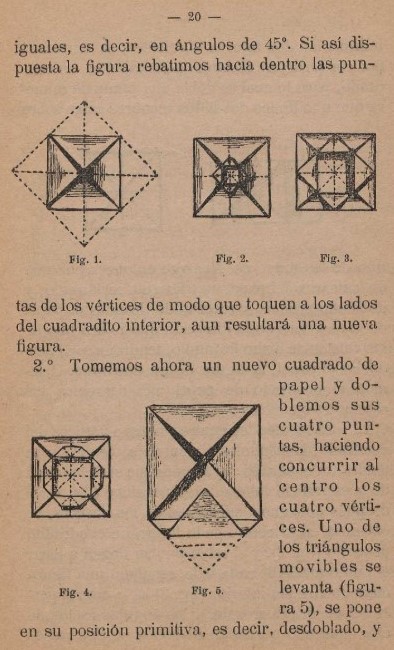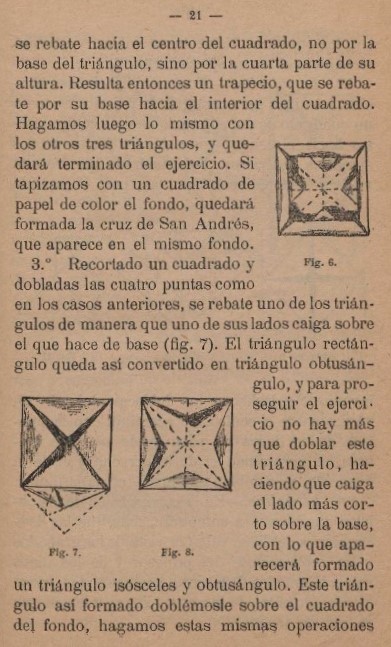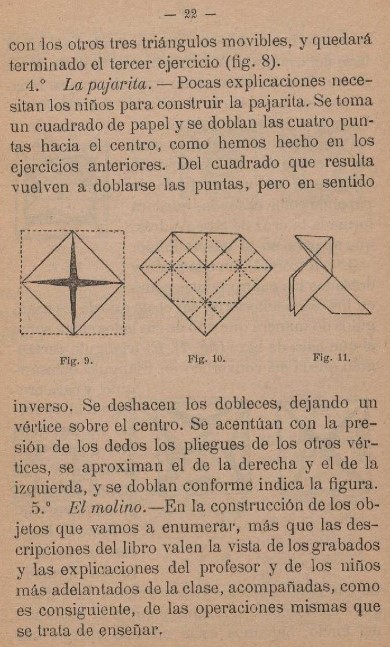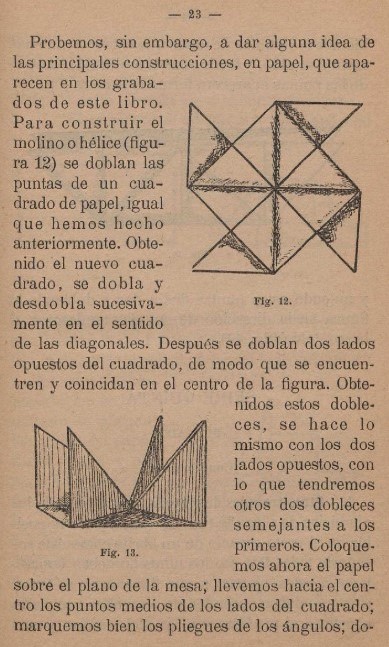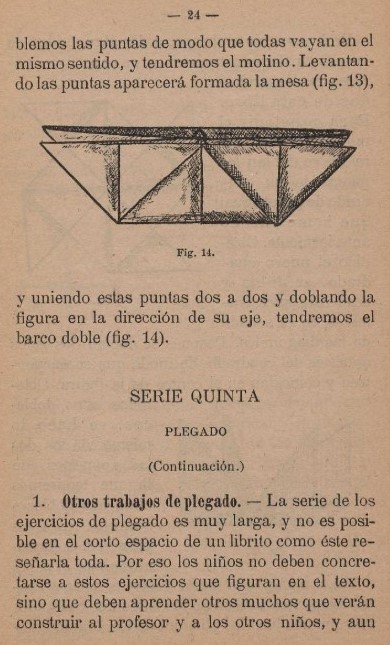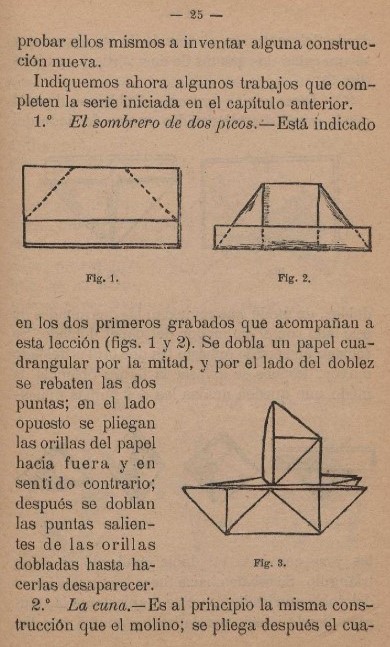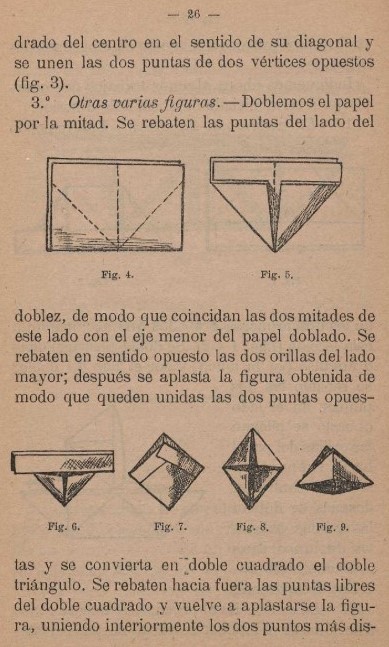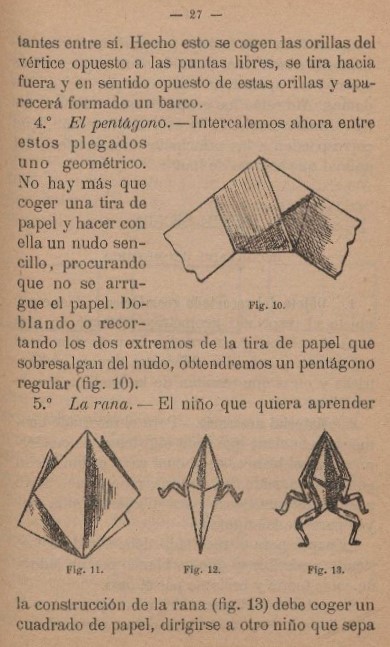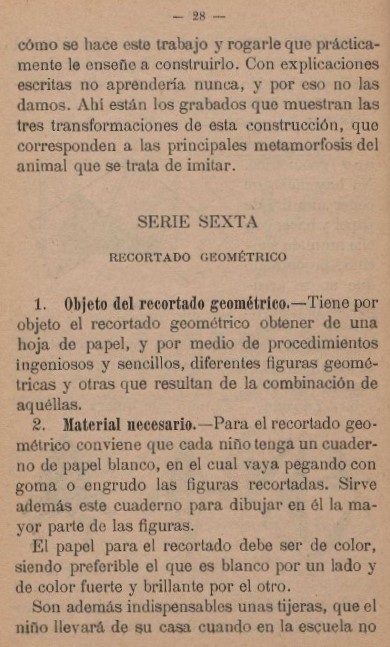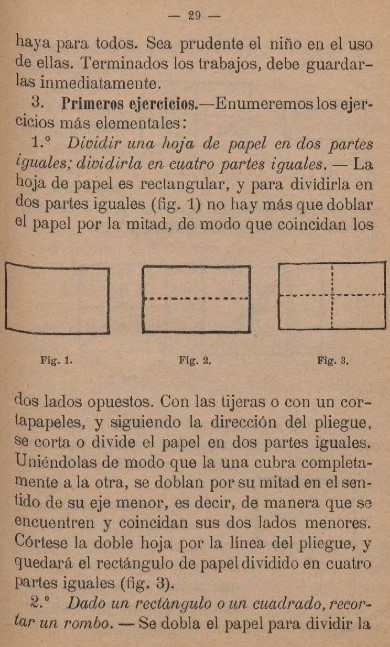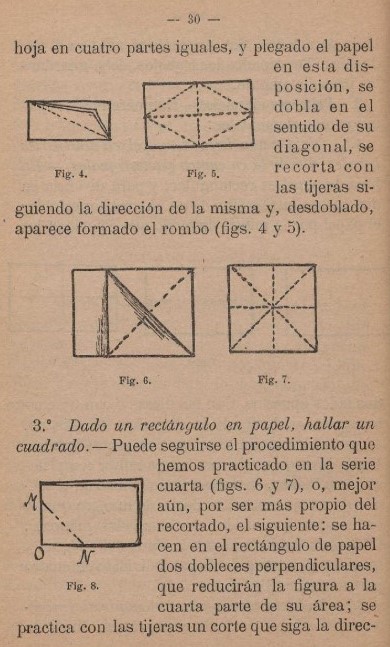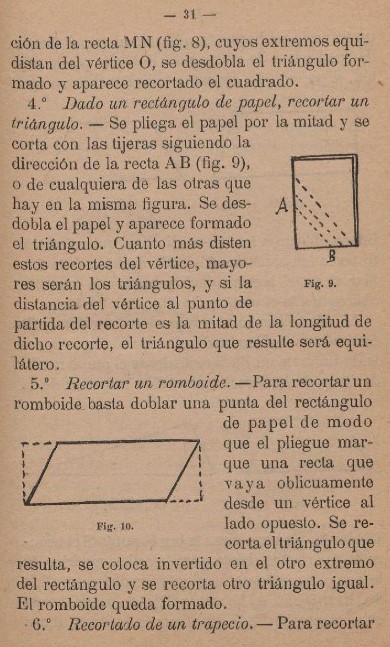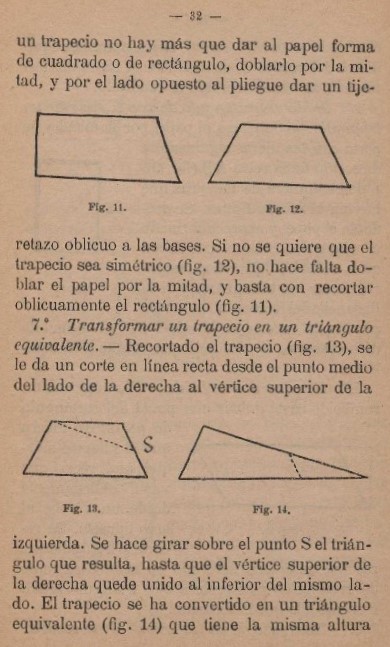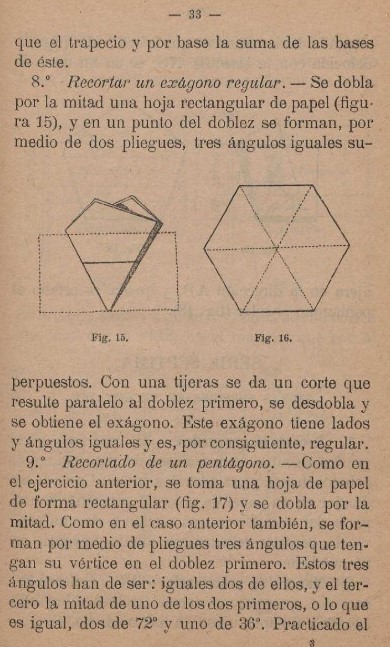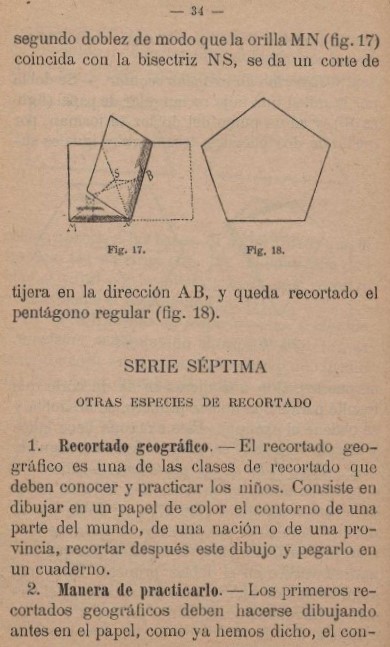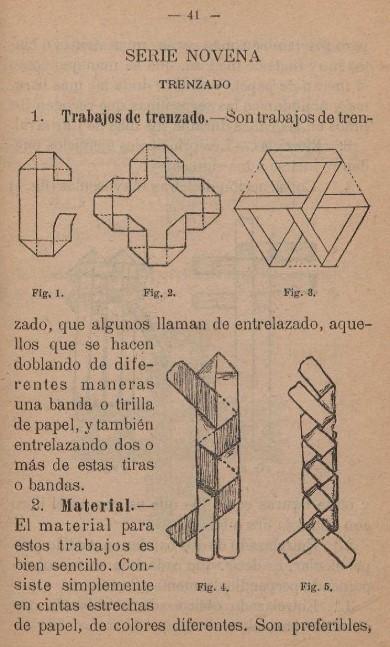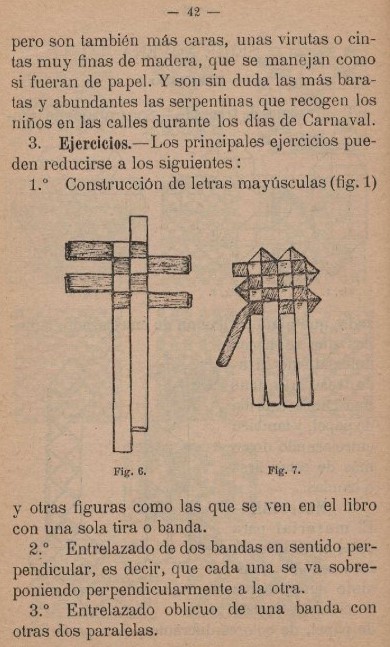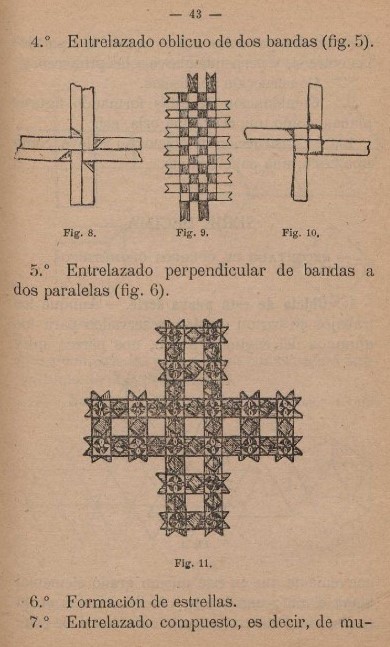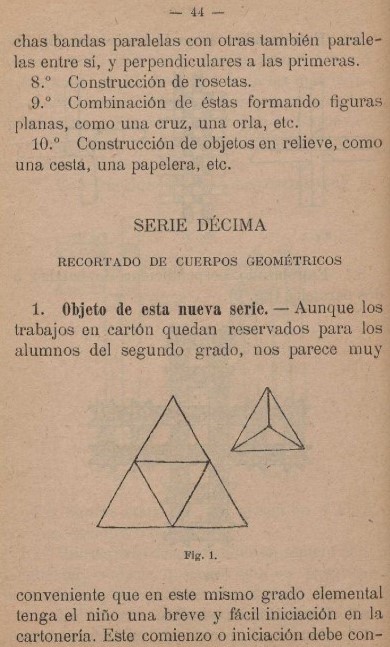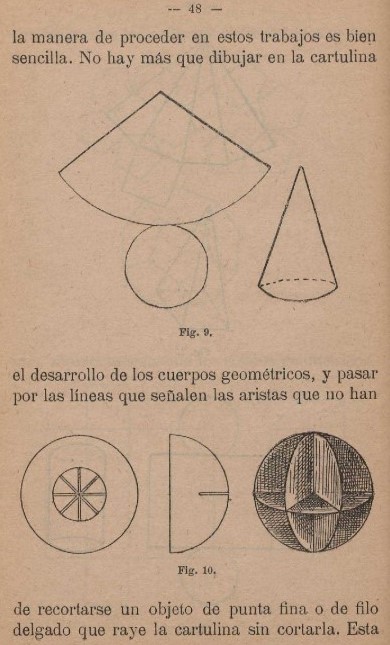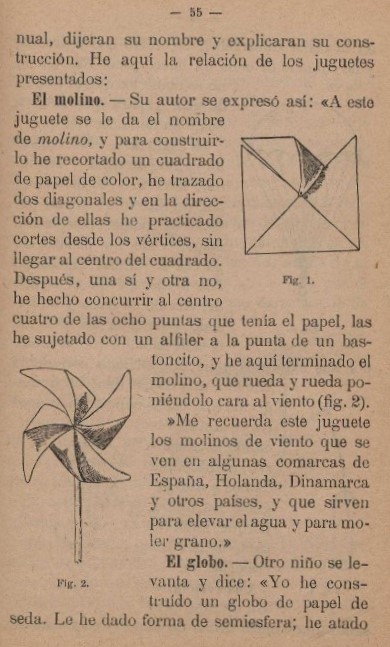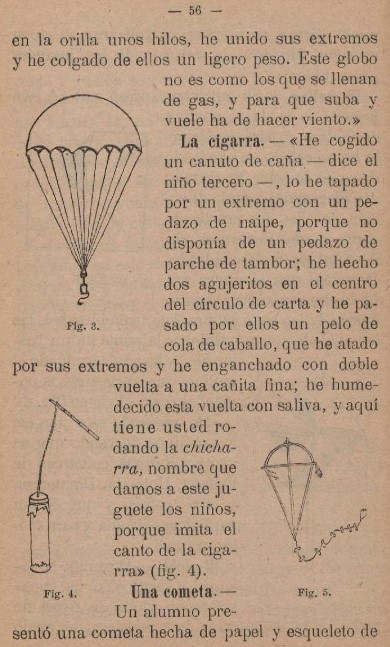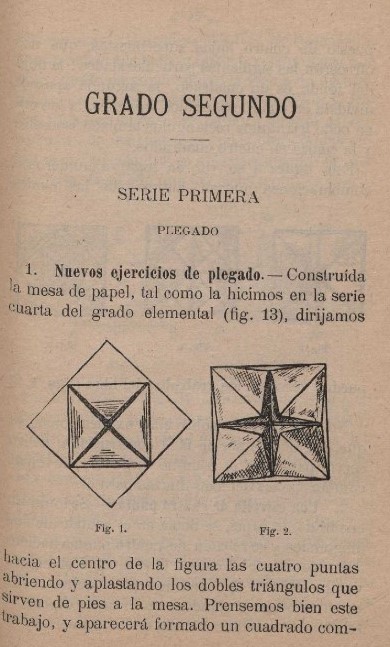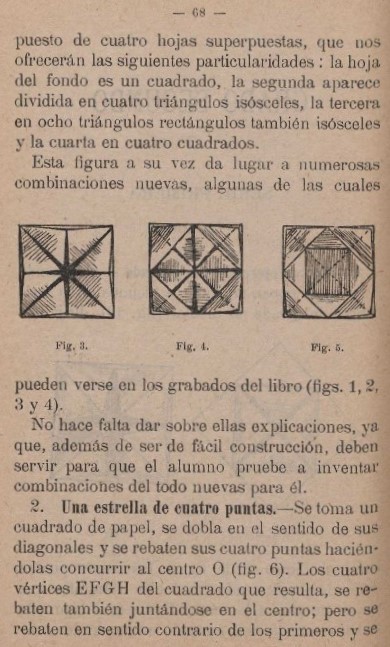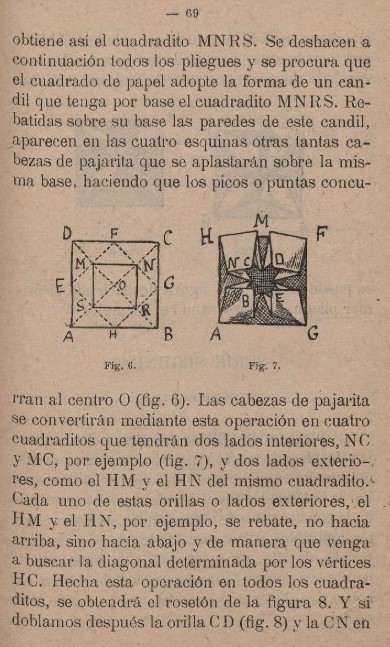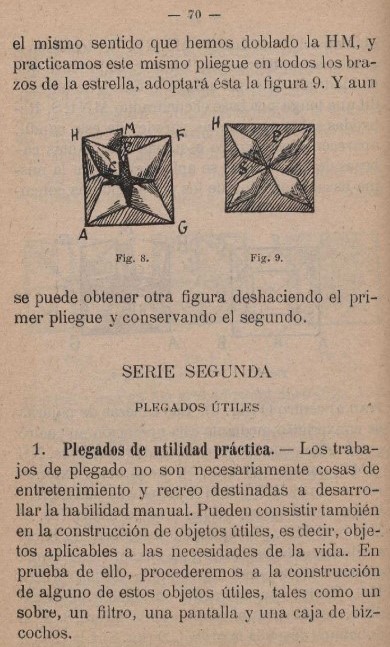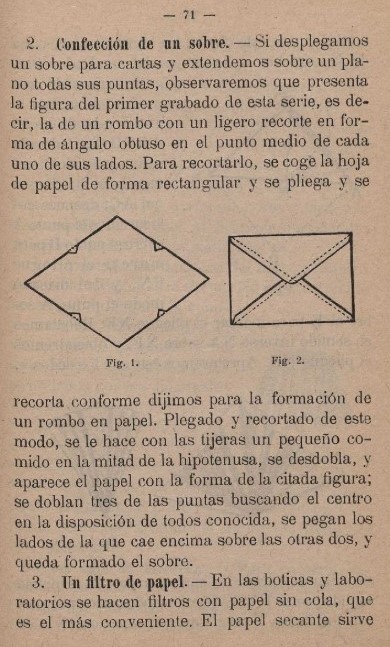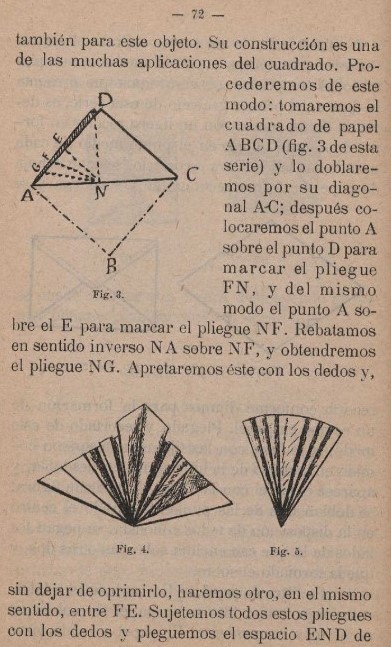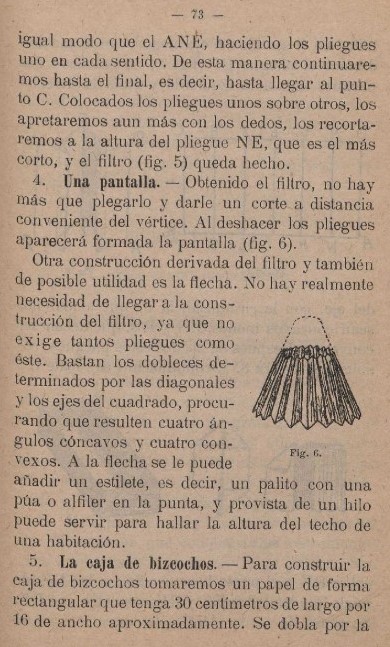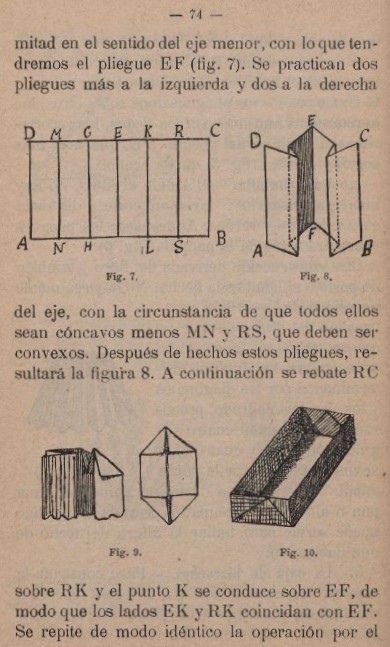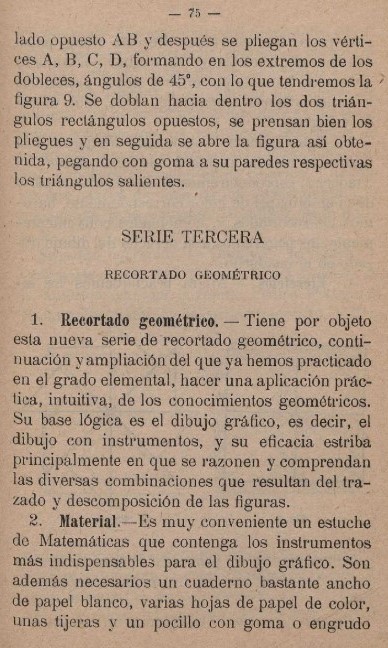| The Public Paperfolding History Project
Last updated 28/2/2024 x |
|||||||
| El Trabajo Manual en la Escuela by Félix Martí Alpera, 1914 | |||||||
| 'El
Trabajo Manual en la Escuela' by Félix Martí Alpera,
was published by Libreria de los Sucesores de Hernando in
Madrid in 1914. My thanks to Juan Gimeno for drawing this
book to my attention. Those pages which feature paperfolding are reproduced at the foot of this page. A full copy of the work can be viewed at Leyendo Ilusionismo - magia:23 • Fundación Juan March **********
********** It is worth noting that on page 24 and 25 the author says:
In English, roughly, 'The series of folding exercises is very long and it is not possible in the short space of a book to explain it all. That is why children should not be limited to those exercises that appear in the text, but they should learn many others that they will see the teacher and other children make, and even try themselves to invent some new construction.' ********** Analysis Grado Primero Patterns from the Blintzed Square - Schonheitsformen (Forms of Beauty)
********** La pajarita - The Cocotte / Pajarita
********** El molino / The Windmill
********** La mesa / The Table
********** El barco doble / The Double Boat
********** El sombrero de dos picos (the two cornered hat) - The Newspaper Hat
********** La cuna (the cradle) - The Boat with Sail
********** Otras varias figuras / Un barco - The Paper Boat This sequence of folds, that culminates in a description of how to pull out the two ends to make the Paper Boat (although there is no image of the finished design) does not give names to the intermediate designs, the Newspaper Hat, the Corner Wall Pocket or the Pyramidal Hat, through which the sequence progresses, although the title suggests that the author is aware that 6, 8 and 9 are designs in their own right.
********** El Pentagono / The Pentagonal Knot
********** La Rana / The Inflatable Frog
The text reads, roughly, 'The child who wants to learn how to make the frog should take a square of paper, go to another child who knows how this work is done and beg him to teach him how to make it. With written explanations i would never learn, and that's why I don't give them here. The drawings show the three transformations of this construction, which correspond to the main metamorphoses of the animal being imitated.' The author does not appear to know that the design can be inflated. ********** Recortar un exagono regular / The Fold and One Cut Hexagon
********** Recortado de un pentagono / The Fold and One Cut Pentagon
********** Letters and other Flat Figures from Paper Strips
********** Weaving two strips together
Four different possibilities are identified in the text: ********** Weaving four strips together
********** Rosettas / The Paper Rosette No instructions for forming the individual rosettes or for linking them together are given.
The text refers to, roughly, '8. Construction of rosettes. 9. Combination of these forming flat figures, such as a cross, a border etc. 10. Construction of objects in relief (ie 3D objects) such as a basket, a watepaper bin etc.' ********** El Globo - The Puff Ball
********** El molino / The Cut and Fold Windmill
********** Grado segundo Patterns from the Windmill Base - Schonheitsformen (Forms of Beauty)
********** Confeccion de un sobre / Envelope from a Rhombus
********** Un filtre de papel / A Filter
********** Una pantalla (a screen) - Pleated Lampshade
********** La Flecha (the arrow) - Paper Flights for Darts This design is not illustrated but is described in words.
The text says, roughly, 'Another construction derived from the filter and also of possible utility is the arrow. There is really no need to get to the construction of the filter as it doesn't need so many pleats. The folds of the diagonals and the axes of the square are enough, ensuring that four concave angles and four points (ie the waterbomb base or the preliminary fold). To the arrow you can add a stylus, that is a stick with a pin or prong at the end, and provided with a thread it can be used to find the height of a ceiling of a room.' This is clearly a description of a throwable dart. The author seems to have invented a less dangerous use, but it is worth asking what is the point of paper flights on a room measuring device? ********** La caja de bizcochos / The Patisserie Box
********** Selected Pages
********** |
|||||||
